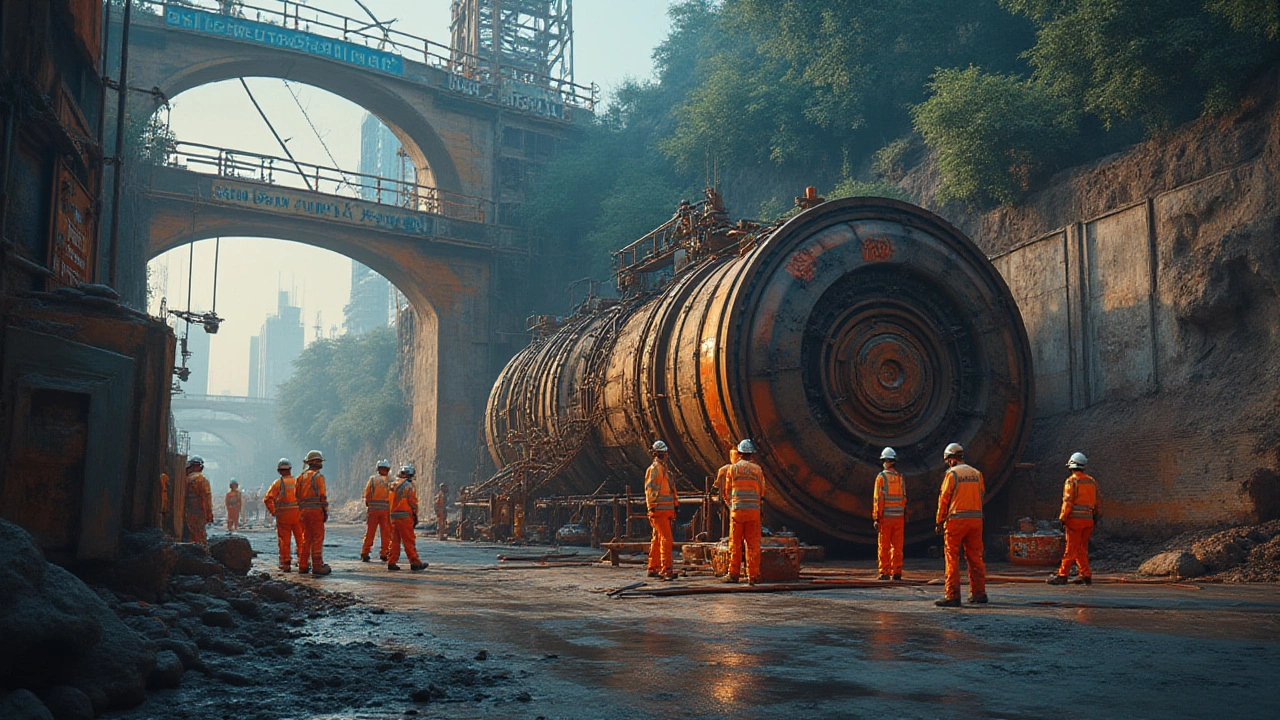Major Tunnel Projects India: What’s Happening Beneath the Surface?
India is digging deep to cut travel time, boost trade and protect the environment. From Himalayan passes to bustling metros, the country’s tunnel boom is reshaping how people and goods move. Below is a quick guide to the most talked‑about tunnels, the tech that builds them, and why they matter for anyone interested in infrastructure or manufacturing.
High‑Altitude Heroes: Atal, Rohtang & Zojila
The Atal Tunnel, also known as the Rohtang Tunnel, stretches 9.02 km beneath the Himalayas, making it the longest road tunnel above 10,000 ft. Completed in 2020, it slashes the Lahaul‑Spiti journey by four hours and brings year‑round connectivity to the region. Likewise, the Zojila Pass Tunnel, still under construction, will be 14.2 km long, linking Srinagar to Leh and opening up trade routes for Ladakh. Both projects rely on advanced boring machines, rock bolt systems, and real‑time monitoring – a perfect showcase for air‑control and ventilation tech like what Blue D Air Control offers.
Metro and Urban Underground: Delhi, Mumbai & Beyond
India’s metro networks hide most of their lines underground. Delhi Metro’s Phase III added over 30 km of tunnels using tunnel boring machines (TBMs) that cut through mixed ground conditions. Mumbai’s upcoming coastal road includes a 2.5 km submerged tunnel, and the upcoming Delhi‑Meerut Regional Rapid Transit System (RRTS) will feature 5 km of high‑speed tunnels with precision air‑flow management. These urban tunnels demand tight ventilation, dust control, and safety systems – exactly where industrial air‑control solutions shine.
Railway Wonders: Pir Panjal & Banihal Qazigund
The Pir Panjal Railway Tunnel, also called the Banihal Qazigund Tunnel, is 11.2 km long and cuts travel time on the Jammu‑Srinagar line by over an hour. Built in tough mountain terrain, the tunnel used double‑shield TBMs and a sophisticated ventilation scheme to keep air fresh for passenger trains. It’s a case study in how engineering, manufacturing, and air‑control must work together for safe, reliable rail corridors.
Why These Tunnels Matter for Manufacturing
Every tunnel project creates a ripple effect for the manufacturing sector. From steel reinforcement and concrete segment production to high‑precision ventilation fans and control panels, local factories see a surge in orders. Companies that supply TBM parts, monitoring sensors, or fire‑suppression gear benefit from the steady pipeline of projects. For businesses like Blue D Air Control, the demand for reliable air‑handling systems in long tunnels is a growth engine.
Tech Trends Shaping India’s Tunnel Future
Smart ventilation, real‑time gas monitoring, and automated fire detection are becoming standard in new tunnels. IoT‑enabled sensors feed data to central control rooms, allowing operators to adjust airflow instantly. Prefabricated concrete lining reduces construction time and improves quality. These trends not only boost safety but also lower long‑term maintenance costs.
In short, India’s tunnel landscape is expanding fast, driven by strategic need and cutting‑edge tech. Whether you’re a civil engineer, a manufacturer, or just curious about where the next road will disappear, keeping an eye on these projects gives you a glimpse of the country’s infrastructure future. And if you’re looking for reliable air‑control solutions to keep tunnels safe and comfortable, you’ve found the right spot – Blue D Air Control has the expertise to keep the air moving where it counts.

Top Tunnel Construction Companies in India: Leaders in Tunnel Engineering
Uncover which companies are building tunnels in India, who leads the industry, and fascinating details behind tunnel engineering and infrastructure projects.
